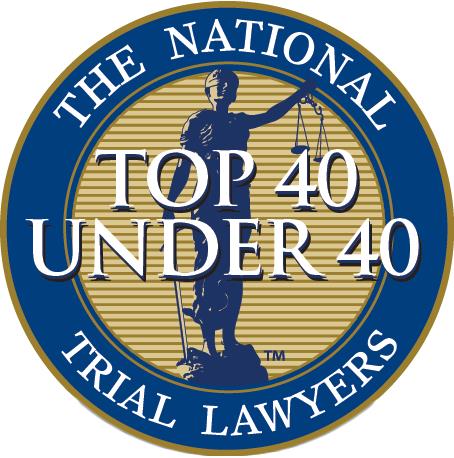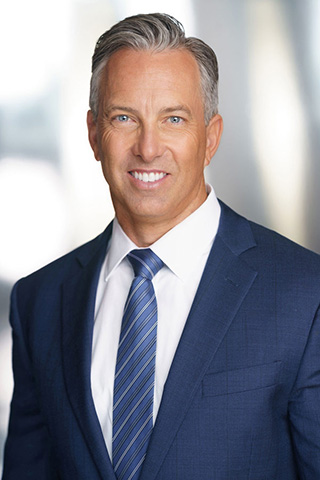Determining who is at fault in a car accident is not just about pointing fingers—it’s about securing your right to recover physically, emotionally, and financially. After a collision, confusion, stress, and uncertainty can overwhelm you, but knowing who is responsible is the first step toward reclaiming control of your life.
In California, an at-fault state, the assignment of blame directly impacts your ability to seek compensation for your injuries, lost income, property damage, and more.
Establishing fault means holding the negligent driver accountable and ensuring you get the justice you deserve. Let’s take a closer look at the factors involved in determining fault after a car accident and why having a skilled car accident attorney is key to securing the full recovery you are entitled to under the law.
Understanding Fault in California Car Accidents

California follows a pure comparative negligence system when determining fault in car accidents. This means that multiple parties can share responsibility for an accident, and each party’s compensation decreases by their percentage of fault.
Fault determination in California hinges on evidence, including traffic laws, witness statements, and expert evaluations. Your ability to clearly establish the other party’s negligence can significantly affect the outcome of your case.
Key Factors in Determining Fault
Several factors come into play when establishing fault in a car accident:
Police Reports
Law enforcement officers who respond to the accident scene will create an official police report. This document often includes:
- A diagram of the accident
- Statements from involved parties and witnesses
- The officer’s assessment of what occurred
- Any citations issued
While not the final word on fault, police reports carry significant weight in fault determination.
Traffic Laws and Violations
Violations of California traffic laws can be strong indicators of fault. Common violations that often lead to accidents include:
- Speeding
- Running red lights or stop signs
- Improper lane changes
- Distracted driving (e.g., texting while driving)
- Driving under the influence of alcohol or drugs
If one driver clearly violated a traffic law, they’re more likely at fault.
Eyewitness Accounts
Witness statements can provide an unbiased perspective on what occurred. These accounts can clarify confusing situations, such as determining who had the right of way or whether someone was distracted. An assertive collection of witness information immediately after the accident can bolster your claim and clearly establish the sequence of events.
Dashcam and Surveillance Footage
Video evidence from dash cams or nearby security cameras can be compelling. This footage captures the accident in real-time, providing indisputable proof of who caused the crash. If you have access to video evidence, it can eliminate the guesswork and significantly strengthen your case.
Vehicle Damage Analysis
The location and extent of vehicle damage can reveal how the accident occurred. For instance, rear-end collisions typically point to the trailing driver being at fault, as they are expected to maintain a safe following distance. Accident reconstruction experts use physics, engineering principles, and detailed scene analysis, such as vehicle damage, road markings, and impact points, to create a detailed report on how the crash happened and who is responsible.
Admissions of Fault
Statements made at the scene, such as an apology or admission of fault, can be used as evidence. While it’s natural to express concern, be cautious about what you say at the scene, as these statements can be interpreted as an admission of guilt. On the flip side, if the other driver admits fault, document it immediately, as it can be a strong piece of evidence.
Road Conditions and Signage
External factors like road conditions, weather, and signage influence fault determination. Missing or obscured road signs, malfunctioning traffic lights, or hazardous road conditions can play a role in the accident. Sometimes, a government entity or third party may be partially liable if they fail to maintain safe road conditions.
Steps to Determine Fault in Your Car Accident Case
Here are the steps you can take to determine fault in your specific case:
Document the Scene
If and when you can, take photos of the accident scene, vehicle damage, skid marks, road conditions, and any visible injuries. The more evidence you gather, the stronger your case will be. These details help paint a clear picture of how the accident occurred and who may be at fault.
Exchange Information
Collect contact and insurance information from the other driver(s) involved. This should include their name, address, phone number, driver’s license number, and insurance policy details. Also, gather contact information from any witnesses on the scene.
Call the Police
Always call the police after an accident, regardless of the severity. A police report is an essential document that provides an unbiased account of the crash, which can be invaluable when determining fault. The police will assess the scene and note any violations which can support your case.
Seek Medical Attention
Even if you feel fine, seek medical attention immediately. Injuries may not be immediately apparent, and a medical report can document the accident’s impact on your health. You need this documentation if the other party disputes the extent of your injuries.
Report the Accident to Your Insurance
Notify your insurance company about the accident as soon as possible. Provide them with accurate details of the incident, but avoid making statements about fault. Let the evidence speak for itself.
Consult an Attorney
Fault determination and insurance claims can be overwhelming, especially when you are dealing with injuries. Consulting a skilled personal injury attorney helps ensure your rights are protected and you have the legal support needed to build a strong case.
Common Scenarios and How Fault Is Determined
Certain types of accidents have presumptive fault associated with them:
Rear-End Collisions
In most cases, the driver who rear-ends another vehicle is considered at fault. This is because drivers are expected to maintain a safe following distance. However, exceptions can occur, such as if the lead driver made an abrupt and unnecessary stop.
Left-Turn Accidents
Drivers making left turns are often found at fault when colliding with a vehicle traveling straight. The turning driver must yield to oncoming traffic. Exceptions include instances where the oncoming vehicle broke the speed limit or ran a red light.
Intersection Accidents
Fault in intersection accidents often hinges on who had the right of way. Traffic signals, signs, and lane markings play a crucial role in these cases. Witnesses and video footage are especially valuable in clarifying fault when multiple drivers claim to have the right of way.
Multi-Vehicle Pile-Ups
Multi-car accidents can involve shared fault among several drivers. Establishing the sequence of collisions and identifying the initial point of impact is critical. Police reports, witness statements, and expert analysis are essential in these complex scenarios.
Challenges in Determining Fault
Determining fault isn’t always straightforward. Several challenges can complicate the process, such as:
Disputed Fault
It’s common for drivers involved in an accident to dispute fault. When fault is contested, having comprehensive evidence is key. A thorough investigation by legal and forensic experts can prove your case.
Insurance Companies’ Influence
Insurance adjusters often attempt to shift fault to minimize payouts. They may interpret the evidence in a way that benefits them, making it essential to have legal representation to advocate for your rights.
Comparative Fault
Even if you bear some responsibility for the accident, California’s comparative fault rule allows you to recover damages. However, the amount will be adjusted based on your level of fault. Skilled legal guidance can help minimize your percentage of fault, maximizing your compensation.
The Role of Insurance Companies

Insurance companies play a significant role in fault determination and settlement negotiations. Here’s what you need to know:
- Insurance adjusters will conduct their own investigation into the accident.
- They may try to minimize their client’s fault to reduce payout amounts.
- Be cautious when providing statements to insurance companies, as they may use your words against you.
- Consider having a legal professional communicate with insurance companies on your behalf to protect your interests.
Insurance companies primarily focus on protecting their bottom line, which often means attempting to pay out as little as possible on claims. Here’s a closer look at some of the tricks car insurance companies play to mislead people:
Rapid Response Teams
Many insurance companies deploy rapid response teams to accident scenes, especially for severe collisions. These teams aim to gather evidence quickly, sometimes before law enforcement completes their investigation. While this can help preserve crucial evidence, it’s also a strategy to build a case that favors their insured party.
Recorded Statements
Insurance adjusters often request recorded statements from all parties involved in the accident. They may present this as a routine procedure, but these statements can be used to dispute your claim or reduce your compensation.
You’re not obligated to provide a recorded statement to the other party’s insurance company without legal representation.
Use of Investigators and Experts
Insurance companies frequently employ their own investigators and accident reconstruction experts. These professionals work to analyze the accident from a perspective that benefits the insurance company. They may challenge your version of events or attempt to shift more fault onto you.
Delayed Tactics
Some insurance companies use delay tactics to pressure claimants into accepting lower settlements. They may drag out the claims process, hoping that financial strain will make you more likely to accept a quick but unfair offer.
Lowball Settlement Offers
Initial settlement offers from insurance companies are often far below the true value of your claim. They may not account for long-term medical needs, lost earning potential, or pain and suffering. It’s crucial to have a clear understanding of your claim’s full value before accepting any offer.
Disputing Medical Treatments
Insurance adjusters may question the necessity of your medical treatments or argue that certain procedures are excessive. They might even suggest that your injuries are due to pre-existing conditions rather than the accident itself.
Social Media Monitoring
In today’s digital age, insurance companies often monitor claimants’ social media accounts for any posts that could contradict their injury claims. A seemingly innocent photo or status update could be used to dispute the severity of your injuries.
The Importance of Legal Representation
Given these tactics and other complexities involved in determining fault after a car accident, it’s clear why having strong legal representation is crucial when dealing with insurance companies.
A skilled personal injury attorney can:
- Conduct a thorough investigation of your accident
- Gather and preserve crucial evidence
- Negotiate with insurance companies on your behalf
- Consult with expert witnesses to strengthen your case
- Ensure you meet all legal deadlines and requirements
- Maximize your potential compensation
Contact a Personal Injury Lawyer for a Free Consultation Today
Determining fault in a car accident can be complex, involving multiple pieces of evidence and expert analysis. To protect your rights and pursue the compensation you deserve, it’s crucial to act swiftly, document everything, and consult with experienced legal professionals.
At Wilshire Law Firm, we are committed to fighting relentlessly for our clients. Our powerhouse team of personal injury attorneys will thoroughly investigate your case, ensuring that fault is accurately determined and you receive the full compensation you are entitled to. Contact us today at (213) 335-2402 or through our online form for a free consultation.
Get Justice. Get Paid. Win with Wilshire.










